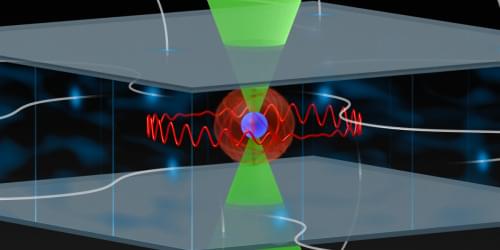Glueballs are an unusual, unconfirmed Standard Model prediction, suggesting bound states of gluons alone exist. We just found our first one.
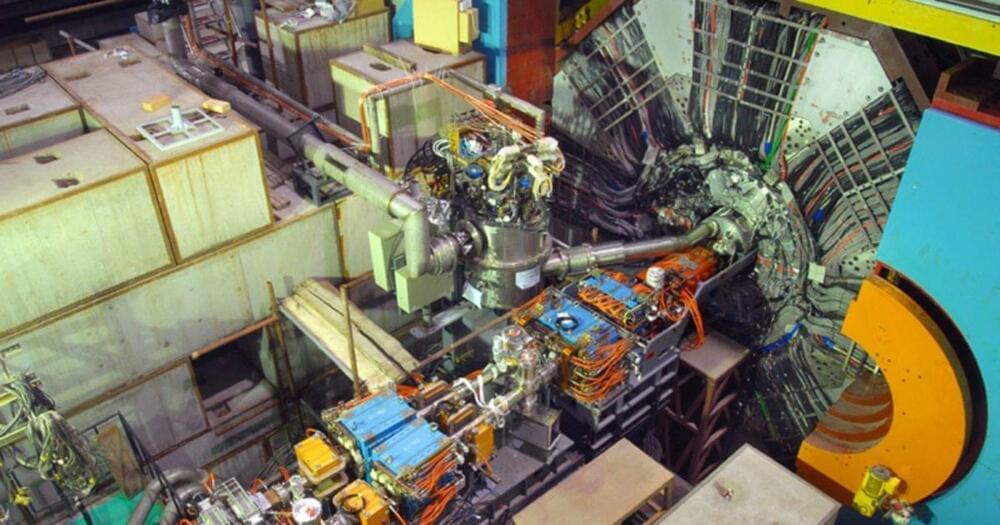


String theory could provide a theory of everything for our universe—but it entails 10500 (more than a centillion) possible solutions. AI models could help to find the right one.
Tiny little threads whizzing through spacetime and vibrating incessantly: this is roughly how you can imagine the universe, according to string theory. The various vibrations of the threads generate the elementary particles, such as electrons and quarks, and the forces acting among them.

Chemical reactions are complex mechanisms. Many different dynamic processes are involved, affecting both the electrons and the nucleus of the present atoms. Very often, the strongly coupled electron and nuclear dynamics induce radiation-less relaxation processes known as conical intersections. Such dynamics, which are at the basis of many biological and chemical relevant functions, are extremely difficult to detect experimentally.
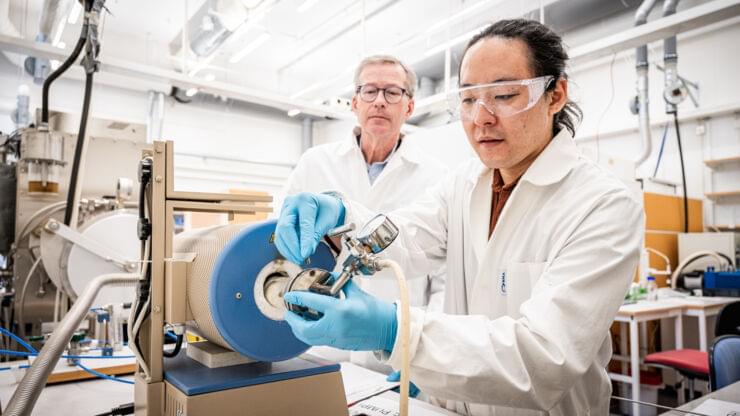
For the first time, scientists have managed to create sheets of gold only a single atom layer thick. The material has been termed goldene. According to researchers from Linköping University, Sweden, this has given the gold new properties that can make it suitable for use in applications such as carbon dioxide conversion, hydrogen production, and production of value-added chemicals. Their findings are published in the journal Nature Synthesis.
Scientists have long tried to make single-atom-thick sheets of gold but failed because the metal’s tendency to lump together. But researchers from Linköping University have now succeeded thanks to a hundred-year-old method used by Japanese smiths.
“If you make a material extremely thin, something extraordinary happens — as with graphene. The same thing happens with gold. As you know, gold is usually a metal, but if single-atom-layer thick, the gold can become a semiconductor instead,” says Shun Kashiwaya, researcher at the Materials Design Division at Linköping University.
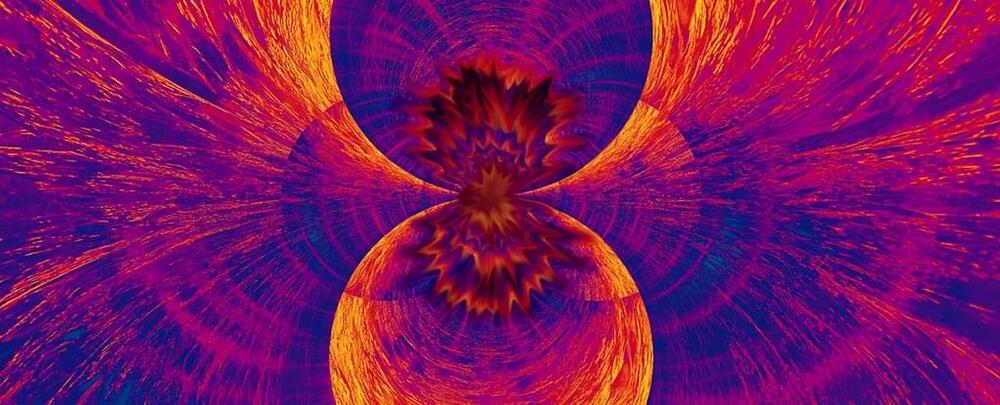
A year after all but ruling out the possibility, a pair of theoretical physicists from Japan and the Netherlands have found quantum entanglement has something fundamentally in common with the physics that drives steam engines, dries your socks, and may even keep the arrow of time pointed in one direction.
This universal property, if indeed it exists as they suggest, would govern all transformations between entangled systems and give physicists a way to measure and compare entanglement beyond counting qubits – and know their limits of manipulating entangled pairs.
Quantum entanglement, the tendency for the quantum fuzziness of different objects to mathematically merge, is a fundamental part of quantum computing along with superposition. When particles, atoms, or molecules are entangled, knowing something about one tells us something of the other.

A proposed experiment shows that quantum entanglement is not the only way to test whether gravity has a quantum nature.
Gravity is part of our everyday life. Still, the gravitational force remains mysterious: to this day we do not understand whether its ultimate nature is geometrical, as Einstein envisaged, or governed by the laws of quantum mechanics. Until now, all experimental proposals to answer this question have relied on creating the quantum phenomenon of entanglement between heavy, macroscopic masses. But the heavier an object is, the more it tends to shed its quantum features and become ‘classical’, making it incredibly challenging to make a heavy mass behave as a quantum particle. In a study published in Physical Review X, researchers from Amsterdam and Ulm propose an experiment that circumvents these issues.
Classical or Quantum?

Researchers at Tohoku University have made a groundbreaking advancement in battery technology, developing a novel cathode material for rechargeable magnesium batteries (RMBs) that enables efficient charging and discharging even at low temperatures. This innovative material, leveraging an enhanced rock-salt structure, promises to usher in a new era of energy storage solutions that are more affordable, safer, and higher in capacity.
Details of the findings were published in the Journal of Materials Chemistry A on March 15, 2024.
The study showcases a considerable improvement in magnesium (Mg) diffusion within a rock-salt structure, a critical advancement since the denseness of atoms in this configuration had previously impeded Mg migration.

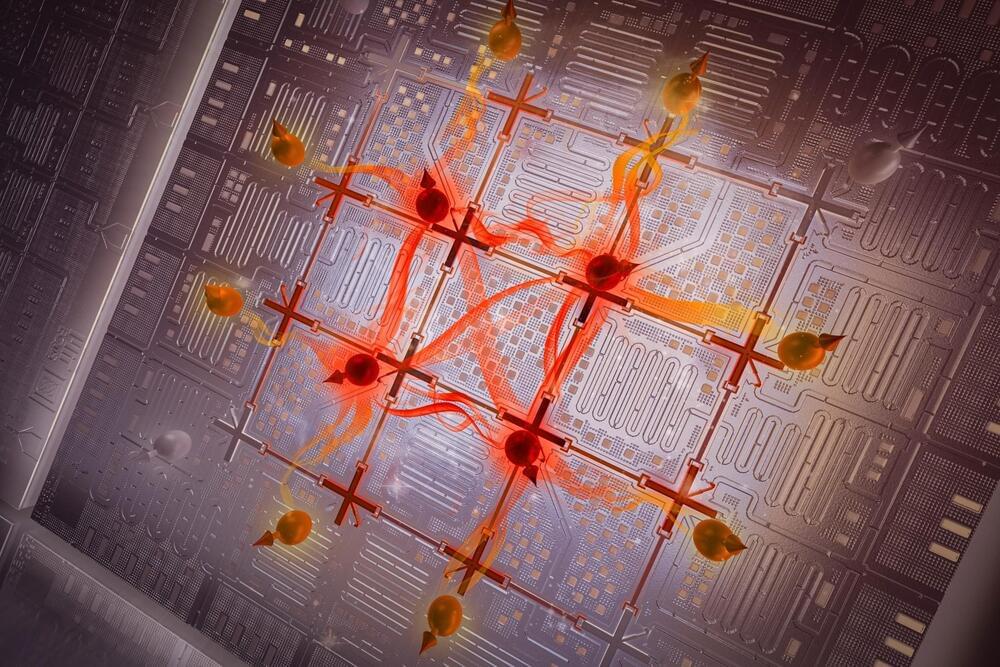
The advance offers a way to characterize a fundamental resource needed for quantum computing.
Entanglement is a form of correlation between quantum objects, such as particles at the atomic scale. This uniquely quantum phenomenon cannot be explained by the laws of classical physics, yet it is one of the properties that explains the macroscopic behavior of quantum systems.
Because entanglement is central to the way quantum systems work, understanding it better could give scientists a deeper sense of how information is stored and processed efficiently in such systems.
